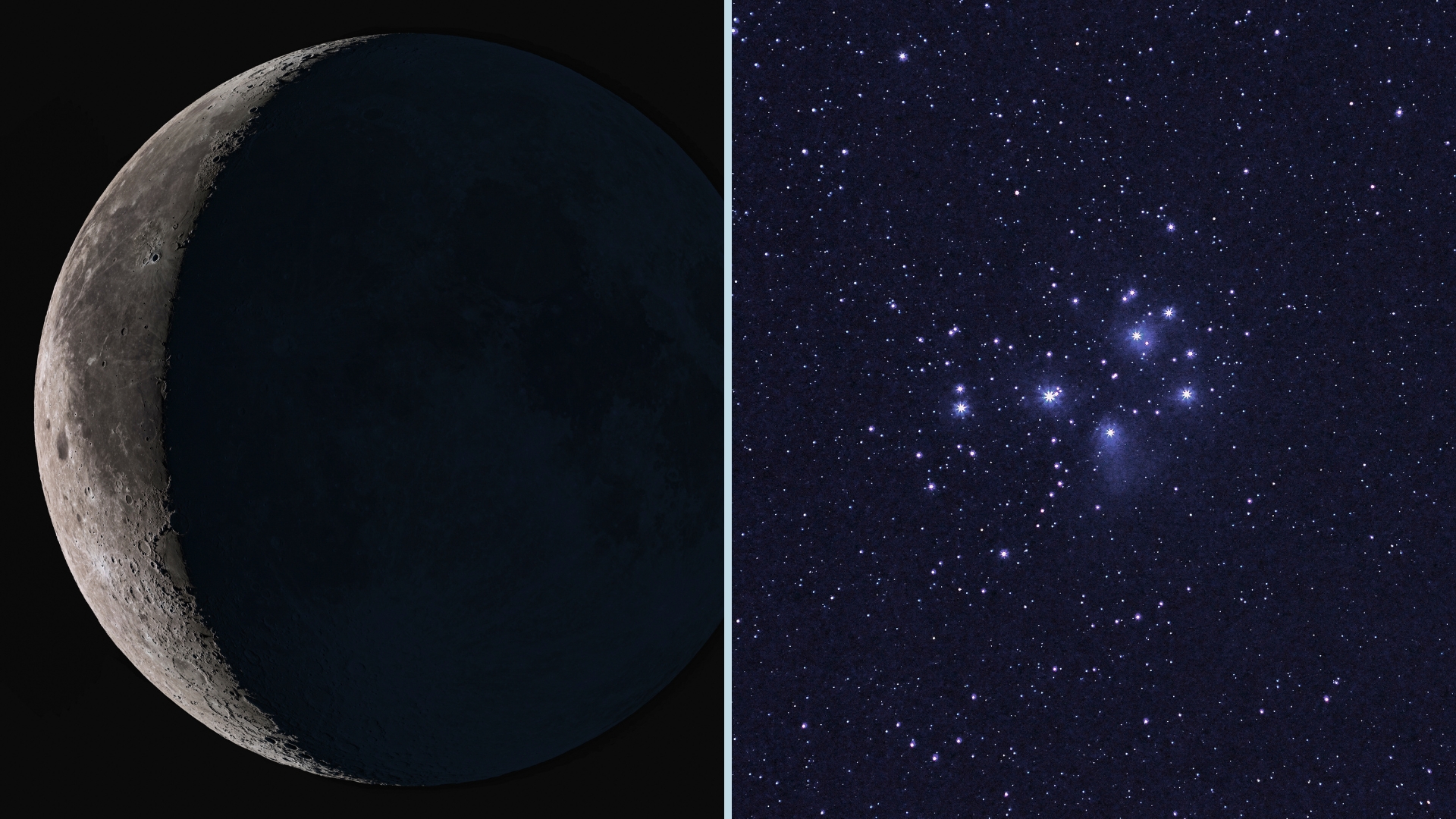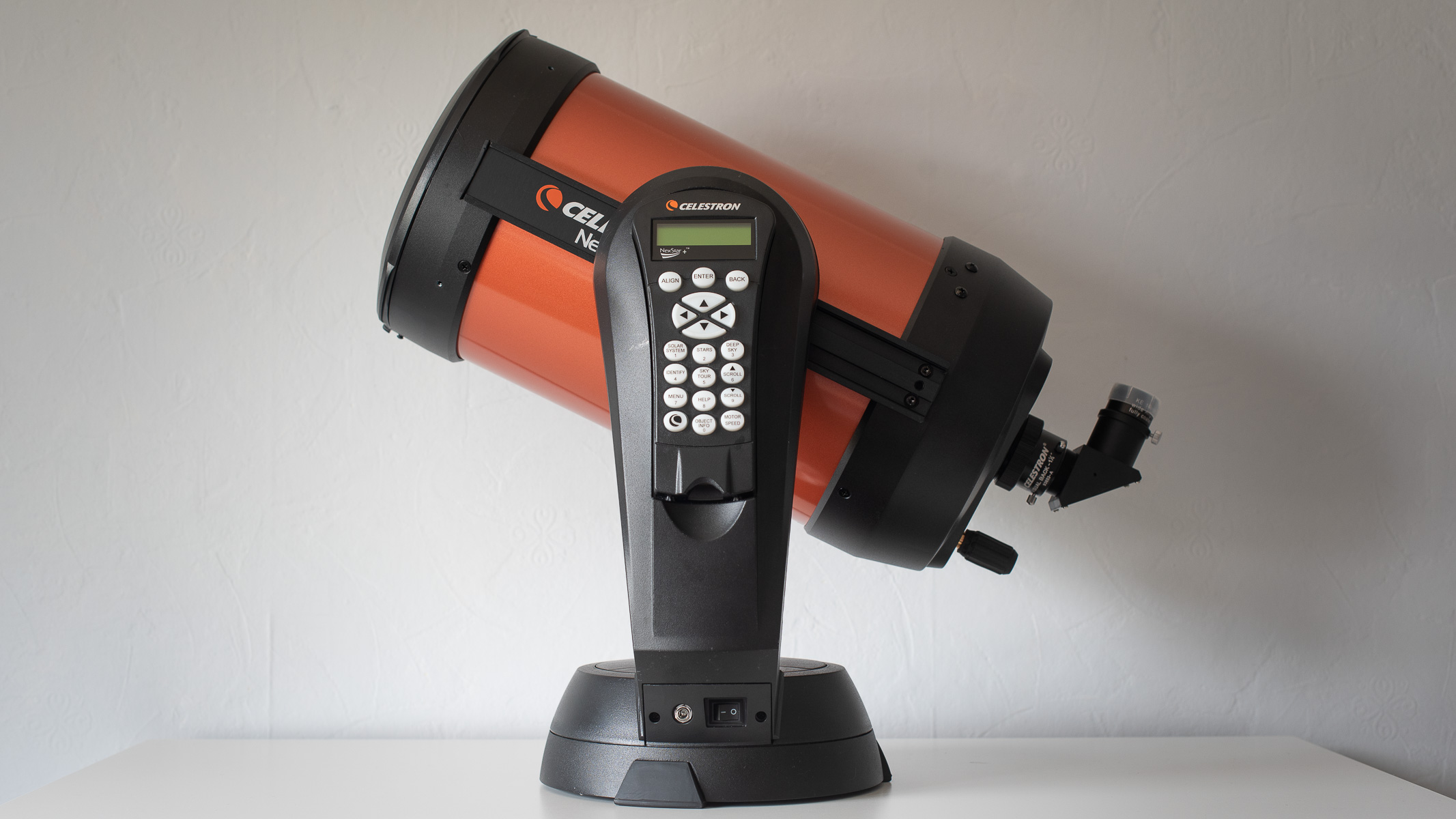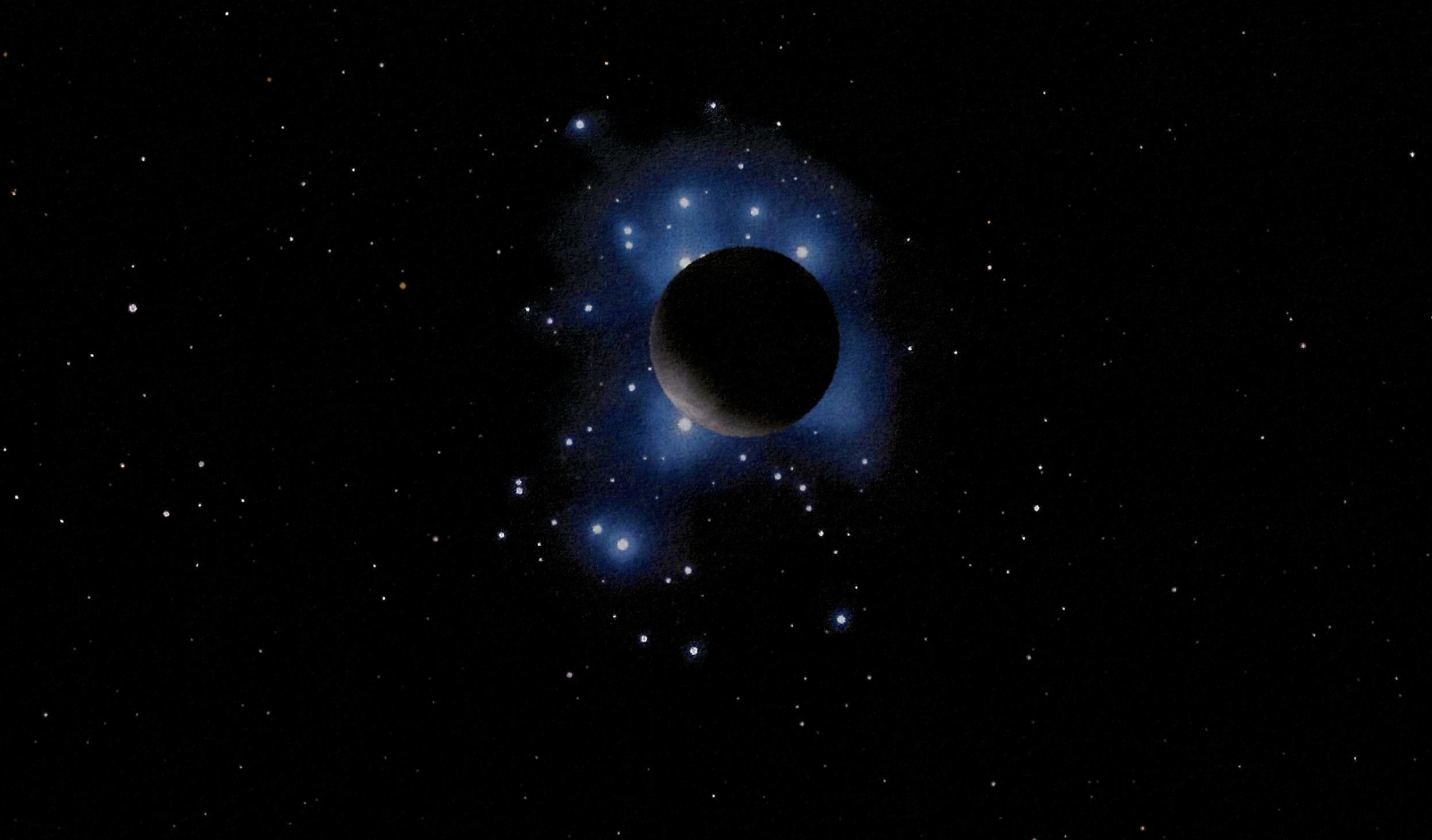See the moon cross the Pleiades for the last time this year on July 20
The moon's crescent limb will cloak and uncover stars from the iconic cluster before sunrise.

If you live anywhere in the contiguous U.S. or Canada, and clear skies are forecast for early Sunday morning, July 20, then be sure to step outside after midnight and before the first light of dawn. Look low in the east-northeast sky for a slender crescent moon just four days before new phase and 23% illuminated, gracefully approaching the Pleiades star cluster. This will mark the third and final lunar occultation of the Pleiades in 2025, promising a very beautiful scene in steadily held binoculars or a small telescope.
Earlier this year, there were two other moon-Pleiades encounters. On the evening of January 9th, an 82%waxing gibbous moon temporarily hid the Pleiades for parts of the U.S., Canada and Central America and then during the overnight hours of February 5-6, a 61% waxing gibbous moon passed in front of the cluster. If you caught one, or both of the first two events (or if you didn't), make a note on your calendar to watch this final moon-Pleiades rendezvous of the year.
In this upcoming case, you will either have to stay up through the night (to await moonrise, which will occur around 1:00 a.m. local daylight time) or set your alarm for the predawn morning hours.
In addition, since the moon will be a lovely waning crescent, as opposed to a waxing gibbous in January and February, stars will disappear first along the bright lunar crescent.
You'll need at least a small telescope, for binoculars probably won't be enough for following stars in the final minutes or seconds as the moon's glare, sunlit edge creeps up to them. But practically any telescope will magnify enough to do the trick. Use 50x magnification, perhaps more if your scope has a solid mount that allows easy tracking.
Stars will reappear about an hour later from behind the moon's dark limb in dramatic fashion: appearing to suddenly "pop-on" as if someone threw a switch. Here, binoculars should do fine, especially if you mount them on a tripod, provided you're watching at exactly the right moment.
In Canada's Maritime Provinces and the northeastern U.S., advancing morning twilight will be an issue, since the eastern sky will be brightening as the moon approaches the Pleiades. As a result, the disappearance of some stars will not be visible because the sky will be too bright. Nonetheless, the view in binoculars of the crescent moon sitting to the upper right of the star cluster will still make for a very pretty sight.
Farther west, the sky will be darker, but the moon and the Pleiades will be lower. This will be especially true for the far-western states and the Canadian province of British Columbia; therefore, a clear and unobstructed view toward the east-northeast is recommended.
Breaking space news, the latest updates on rocket launches, skywatching events and more!
Below are two timetables giving local circumstances for the disappearance and reappearance of the four brightest members of the Pleiades that will be occulted. The information is based in part on data generated by the International Occultation Timers Association (IOTA) and is valid for fourteen U.S., two Canadian and one Mexican city. Keep in mind, however, that many other stars not listed here will also be occulted.
If the disappearance or reappearance of a star takes place during dawn twilight, the time is provided in italic font. Also, take note that if the disappearance or reappearance of a star occurs near or soon after the start of civil twilight (roughly 40 minutes before sunrise), it is assumed that the sky would probably be too bright to easily see it. In addition, the moon might miss the star entirely. In both such cases, the time is omitted. All times are in local civil time.
Location | Electra | Alcyone | Atlas | Maia |
|---|---|---|---|---|
Los Angeles | —— | 2:21 a.m. | —— | —— |
Seattle | 2:03 am. | 2:39 a.m. | 3:16 a.m. | —— |
Tucson | —— | 2:18 a.m. | —— | 2:07 a.m. |
Denver | 2:35 a.m. | 3:27 a.m. | —— | —— |
Helena | 2:52 a.m. | 3:36 a.m. | 4:19 a.m. | —— |
Monterrey | 2:13 a.m. | 3:28 a.m. | —— | 2:44 a.m. |
Austin | 3:17 a.m. | 4:26 a.m. | —— | 3:51 a.m. |
Kansas City | 3:30 a.m. | 4:31 a.m. | —— | 4:10 a.m. |
Winnipeg | 3:50 a.m. | 4:43 a.m. | —— | —- |
N. Orleans | 3:16 a.m. | —— | —— | 3:48 a.m. |
Chicago | 3:33 a.m. | 4:41 a.m. | —— | 4:12 a.m. |
Atlanta | 4:21 a.m. | —— | —— | 4:54 a.m. |
Miami | 4:15 a.m. | —— | —— | 4:42 a.m. |
Washington | 4:30 a.m. | —— | —— | 5:05 a.m. |
New York | 4:35 a.m. | —— | —— | —— |
Boston | 4:39 a.m. | —— | —— | —— |
Montreal | 4:42 a.m. | —— | —— | —— |
Location | Electra | Alcyone | Atlas | Maia |
|---|---|---|---|---|
Los Angeles | 2:15 a.m. | 3:10 a.m. | —— | —— |
Seattle | 2:22 a.m. | 3:31 a.m. | 4:01 a.m. | —— |
Tucson | 2:13 a.m. | 3:04 a.m. | —— | 2:27 a.m. |
Denver | 3:21 a.m. | 4:19 a.m. | —— | —— |
Helena | 3:26 a.m. | 4:31 a.m. | 4:56 a.m. | —— |
Monterrey | 3:05 a.m. | 3:35 a.m. | —— | 3:33 a.m. |
Austin | 4:11 a.m. | 4:51 a.m. | —— | 4:38 a.m. |
Kansas City | 4:24 a.m. | 5:16 a.m. | —— | 4:46 a.m. |
Winnipeg | 4:37 a.m. | —— | —— | —— |
N. Orleans | 4:11 a.m. | —— | —— | 4:43 a.m. |
Chicago | 4:31 a.m. | —— | —— | 4:57 a.m. |
Atlanta | 5:18 a.m. | —— | —— | 5:52 a.m. |
Miami | 5:03 a.m. | —— | —— | 5:44 a.m. |
Washington | —- | —— | —— | —— |
New York | —— | —— | —— | —— |
Boston | —— | —— | —— | —— |
Montreal | —— | —— | —— | —— |
Specific times and zones of visibility
Courtesy of IOTA, detailed prediction pages are available for each of the four brightest stars — Alcyone, Atlas, Electra, and Maia. These include Universal Time (UT) disappearance and reappearance data, as well as Mercator maps showing where each occultation will be visible.
For example, from St. Louis, Missouri (in Central Daylight Time, UTC–5), Maia will disappear at 4:06 a.m. CDT and reappear at 4:51 a.m. CDT. At the moment of reappearance, the sun will be about 11 degrees below the horizon, meaning Maia should reappear in a twilight sky.

Want to see the moon and Pleiades together? The Celestron NexStar 8SE is ideal for beginners wanting quality, reliable and quick views of celestial objects. For a more in-depth look at our Celestron NexStar 8SE review.
In addition to the timetable, a world map (Mercator projection) is provided, showing the region where the occultation will be visible. The boundaries are in different colors. The Cyan boundaries show the curves of the occultation disappearance or reappearance at moonrise or moonset. A continuous white line marks the nighttime northern and southern limits of the occultation. A continuous blue line denotes the occultation limits occurring during twilight, while a dotted red line depicts the occultation limits occurring in daylight.
For Alcyone, the occultation takes place over much of the western U.S. For Atlas, visibility occurs over the northwest U.S., western Canada and Alaska. For Electra, visibility will be over much of the U.S. and Canada, while the occultation of Maia will be visible primarily over the central and southern U.S. and Mexico.
Joe Rao serves as an instructor and guest lecturer at New York's Hayden Planetarium. He writes about astronomy for Natural History magazine, Sky and Telescope and other publications.

Joe Rao is Space.com's skywatching columnist, as well as a veteran meteorologist and eclipse chaser who also serves as an instructor and guest lecturer at New York's Hayden Planetarium. He writes about astronomy for Natural History magazine, Sky & Telescope and other publications. Joe is an 8-time Emmy-nominated meteorologist who served the Putnam Valley region of New York for over 21 years. You can find him on Twitter and YouTube tracking lunar and solar eclipses, meteor showers and more. To find out Joe's latest project, visit him on Twitter.
You must confirm your public display name before commenting
Please logout and then login again, you will then be prompted to enter your display name.

